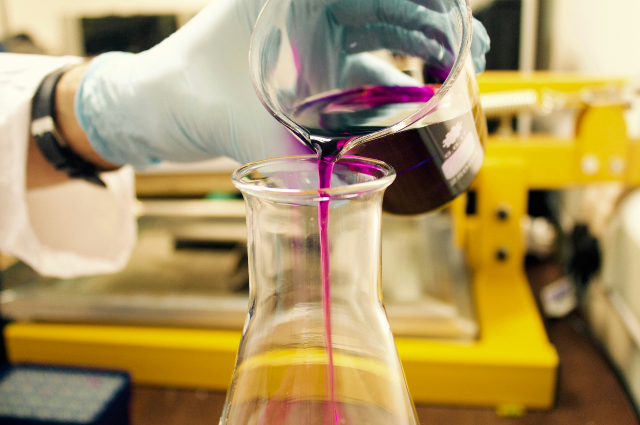
Photo by Raul Petri on Unsplash
In today’s world, religion and science are often seen as polar opposites, each representing distinct approaches to understanding the world around us. These two systems of thought are integral to human existence, but they operate differently in how they shape our beliefs, values, and perceptions of reality. This article explores the idea that religion and science are built upon these contrasting foundations—faith and doubt—and the impact these differences have on human culture, society, and knowledge.
Understanding the Culture of Faith in Religion
Religion is, at its core, a culture of faith. Faith is the foundation upon which religious beliefs and practices are built. It is the belief in something greater than the material world, often involving divine beings, spiritual principles, and supernatural forces. Religion encourages its followers to trust in what cannot always be seen, measured, or scientifically proven.
Faith in religion is not simply a passive acceptance of beliefs but an active commitment to a worldview that transcends empirical evidence. In many religious traditions, belief in the existence of a higher power or the supernatural is central to the faith experience. For example, Christians believe in the existence of God and the divinity of Jesus Christ, even though these concepts cannot be proven by scientific methods. Similarly, Muslims believe in Allah and the teachings of the Quran as the divine truth, which they accept through faith rather than scientific verification.
Faith also serves as a source of comfort, especially in the face of suffering, death, and existential questions. The belief in a higher power or afterlife often provides a sense of hope, moral direction, and community for individuals within a religious tradition.
While faith can be deeply personal, it also extends to the collective culture of religious groups. Religious practices, rituals, and customs are steeped in faith and passed down from generation to generation. These practices often create a strong sense of community, belonging, and shared identity, with faith serving as the glue that binds individuals together. The culture of faith in religion, therefore, plays an essential role in shaping both individual and collective experiences.
Science: A Culture of Doubt and Inquiry
In stark contrast to religion’s foundation of faith, science is a culture of doubt. Science is built upon skepticism, inquiry, and a constant questioning of assumptions. Scientists are trained to doubt their observations, theories, and hypotheses in order to improve upon them and arrive at more accurate explanations of natural phenomena. The scientific method—the process of observing, hypothesizing, experimenting, and revising based on evidence—is a system designed to challenge preconceived notions and reduce bias.
Doubt in science is not a negative or destructive force but a powerful tool for progress. It is through questioning and testing that science has made remarkable advancements in technology, medicine, and our understanding of the universe. Scientists are constantly challenging existing theories to ensure they stand up to scrutiny and can be replicated under controlled conditions. This process of verification and falsification is fundamental to the culture of science. The scientific community welcomes skepticism because it helps refine ideas and theories, pushing humanity closer to the truth.

Photo by Louis Reed on Unsplash
The culture of doubt in science also extends to the idea of uncertainty. New evidence can lead to the revision or abandonment of long-held beliefs. For instance, the understanding of the universe has evolved from the geocentric model to the heliocentric model, and later to the big bang theory, as new discoveries have forced us to reconsider previous assumptions. This openness to uncertainty and change is what distinguishes science from other cultural systems that rely on fixed dogmas or unchallenged beliefs.
The Role of Faith and Doubt in Human Life
While religion and science often appear to be at odds, both faith and doubt play essential roles in human life. Faith provides individuals with a sense of purpose, meaning, and security, while doubt pushes the boundaries of knowledge and drives human innovation. Together, they reflect the complexity of the human experience.
For individuals, the culture of faith in religion offers a source of comfort in a world that is often unpredictable and filled with suffering. Faith allows people to find meaning in their lives and make sense of events that seem unjust or incomprehensible. Religious faith encourages individuals to trust in something greater than themselves and in the possibility of redemption, transformation, and salvation. For many, this sense of faith is deeply rooted in their upbringing, community, and personal experiences.
On the other hand, the culture of doubt in science offers a way to navigate an ever-changing world. Science seeks to explain the unknown by uncovering evidence-based truths. Through science, humanity has made extraordinary progress in medicine, technology, and understanding the natural world. Doubt in science leads to a continuous process of learning and improvement, which is vital for technological advancements and solving pressing global issues.
Both faith and doubt are essential to personal growth and societal progress. While religion helps individuals cope with life’s existential questions, science helps solve the practical challenges that face humanity. A balance of both faith and doubt can lead to a more holistic view of the world, one that acknowledges the limitations of human understanding while continuing to seek answers to the mysteries of existence.
Conflict or Complementarity?
While religion and science are often portrayed as being in conflict, the relationship between them is more nuanced. It is true that at certain points in history, religious doctrines have clashed with scientific discoveries. The conflict between the Catholic Church and Galileo over the heliocentric model of the universe is a prime example of how religious faith and scientific inquiry have historically been at odds.
However, this conflict is not always inevitable. Many religious individuals and institutions embrace scientific advancements and view them as a means of understanding the world that complements their faith. Theologians such as Francis Collins, a renowned geneticist and Christian, have argued that science and faith can coexist harmoniously. For such individuals, science serves as a tool to explore the wonders of creation, while religion provides the moral and spiritual framework to understand their place within it.
In fact, many scientists throughout history, including Isaac Newton, Albert Einstein, and Gregor Mendel, held strong religious beliefs and saw their scientific work as a way to explore and celebrate the mysteries of the universe created by God. For these individuals, science and faith were not opposing forces but complementary aspects of a deeper search for truth.
Conclusion: Embracing Faith and Doubt in a Complex World
Religion is indeed a culture of faith, providing individuals with meaning, purpose, and comfort. Science, on the other hand, is a culture of doubt, encouraging skepticism and inquiry to expand the boundaries of human knowledge. These contrasting approaches to understanding the world shape our experiences and our societies, and they offer unique perspectives on the human condition.
In a complex and often uncertain world, both faith and doubt are essential to human progress. Faith gives us the strength to face life’s challenges with hope and trust, while doubt drives us to search for knowledge and solutions to the problems that confront us. Instead of viewing religion and science as conflicting forces, we should recognize the valuable contributions both make to our understanding of existence. By embracing both the culture of faith and the culture of doubt, we can navigate the complexities of life with a deeper appreciation for both the mysteries of the universe and the human capacity for discovery and growth.
